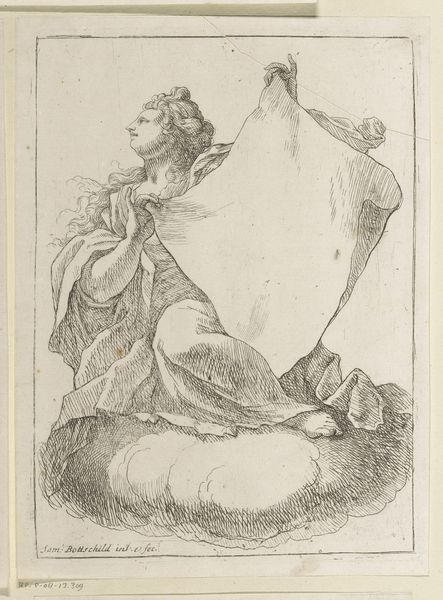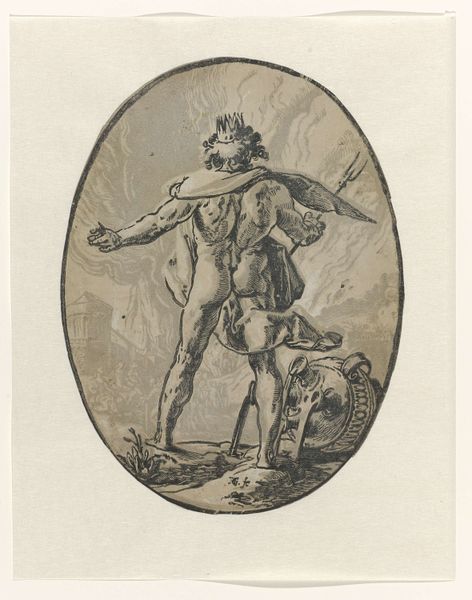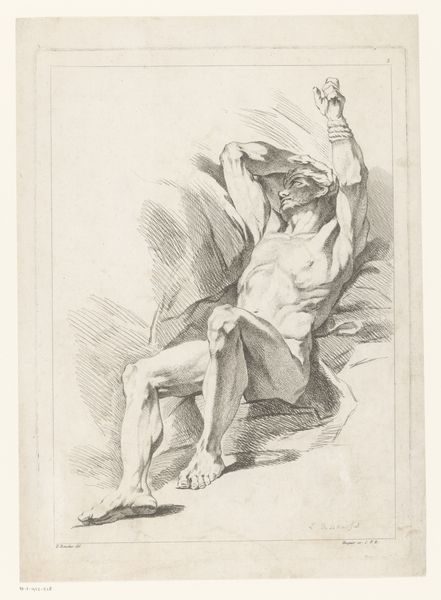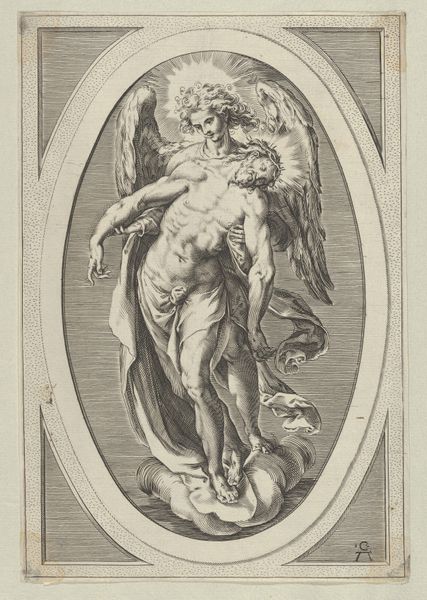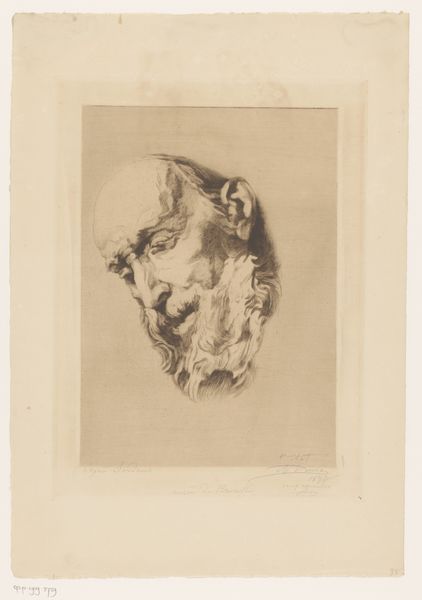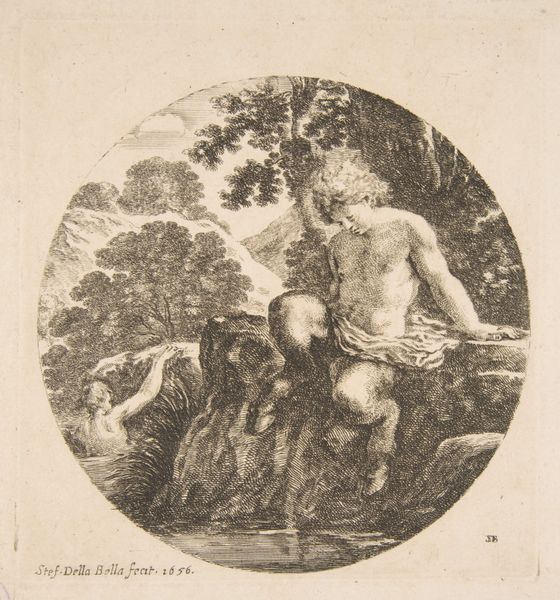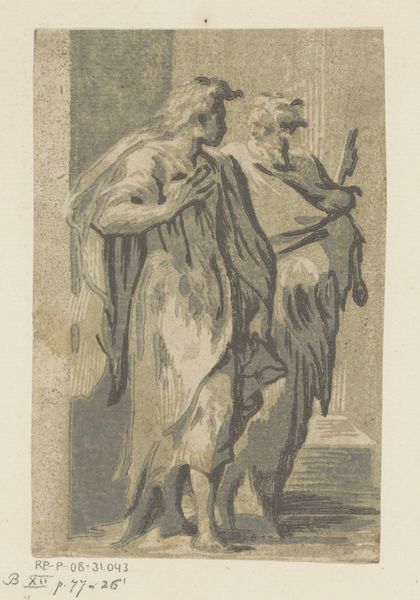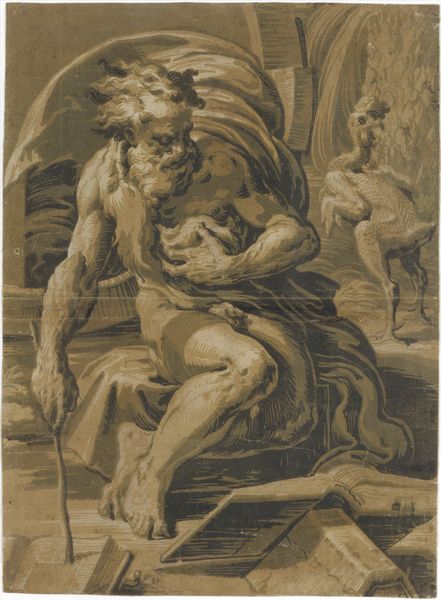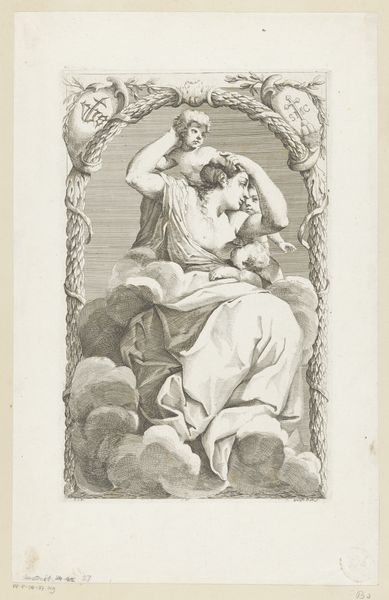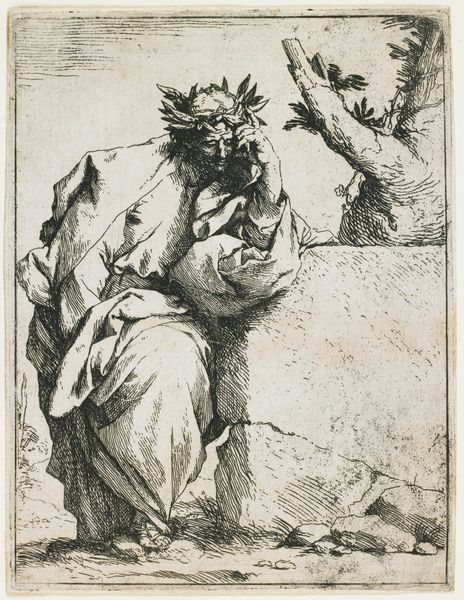
Caliban (from "Twelve Characters from Shakespeare") 1775
0:00
0:00
Dimensions: Sheet: 15 11/16 x 12 3/4 in. (39.8 x 32.4 cm)
Copyright: Public Domain
John Hamilton Mortimer made this print of Caliban in 1775, using etching. That means he would have covered a metal plate with a waxy, acid-resistant ground, then scratched an image into it with a needle. Acid would have bitten into the exposed lines, allowing the plate to be inked and printed. The resulting image has a stark, graphic quality, perfect for depicting Caliban, the enslaved, monstrous character from Shakespeare’s *The Tempest*. Mortimer’s interest in the grotesque is evident in the exaggerated features: the heavy brow, the pointed ears, the simian hand with its elongated nails. But it’s the *making* of the image that really amplifies its social charge. Etching was a relatively democratic medium in the 18th century; it allowed for the wide distribution of images, and thus, ideas. By choosing this technique to depict Caliban, Mortimer subtly connects the character’s enslavement to broader issues of labor, class, and exploitation. It makes you wonder: who, in Mortimer’s time, was scratching out a living, much like the artist scratched this image into being?
Comments
No comments
Be the first to comment and join the conversation on the ultimate creative platform.


